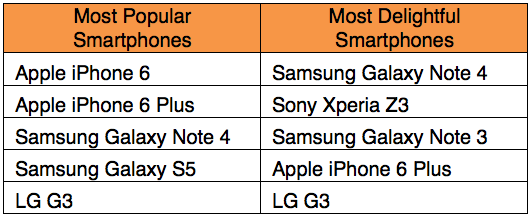Conversation about the Network Function Virtualization (NFV) and Software Defined Network (SDN) markets is rich and increasingly robust. At Argus Insights, we track what people are interested in, so we can pass this knowledge on and influence better business decisions. We will share insights weekly though our newsletter.
[themify_button style=”medium orange rect” link=”https://argusinsights.com/trendingsocialnewsletter/” target=”_blank” ]Please subscribe here if interested[/themify_button]
This week, we looked to the most popular links shared on Social Media (including Twitter, Facebook, boards, and blogs). Conversation is focused largely on what needs to change in order to ensure immediate success with the promise of continued scalability.
Are you interested in knowing who the current winners and losers are in the battle for mindshare in the SDN/NFV market? We’re hosting a free 30 minute webinar to answer that question on January 27 at 10am PST. It will be hosted by founder and CEO of Argus Insights, Dr. John Feland. He will provide concrete insights that will aid you in planning your 2015 strategy and investments, and influence your preparation for the Mobile World Conference 2015 (March 2, Barcelona, Spain).
[themify_button style=”medium orange rect” link=”https://wx168.infusionsoft.com/app/page/argussdnwebinar” target=”_blank” ]To register for the webinar: please click here[/themify_button]
5 critical changes to IT infrastructure usage you should be aware of in 2015
Shared 97 times:
2014 was filled with developments in IT infrastructure. This article predicts that while “hybrid cloud, increasing levels of flash storage and the emergence of OpenStack” dominated industry conversation, these will be overtaken by topics like automation, configuration management tools, lower pricing and cloud consolidation.
SDN & NFV in Mobile Networks
Shared 85 times:
This article discussed the economic and operational benefits SDN and NFV provide. By presenting the opportunity to “transition from appliance-based, proprietary hardware implementations to software-based, open platforms,” companies can reduce improve elasticity and simplify management by improving time to market cycles. These benefits are only possible, however, if virtual functions are “capable of adapting and scaling,” and so must be integrated into the Mobile backhaul network with integrated intelligence.
Opensource.com
Shared 75 times:
People shared the general website of open source, which invites the user to “discover an open source world.” With featured articles like “5 favorite Raspberry and Ardunio projects,” “A cloud management tool for simple deployments,” and “5 new guides for using OpenStack,” this page is a filled with information about how publicly accessible software encourages collaborative participation and transparency.
OpenShift PaaS Technology To Get Integrated With Docker Containers, Kubernetes Orchestration
Shared 66 times:
Red Hat’s Platform-as-a-Service (PaaS) technology is evolving yet again, as they collaborate with Docker, “an open source technology which uses containers for application virtualization,” and Kubernetes, which is “a project by Google for container orchestration,” to rollout OpenShift 3. This is another step toward allowing customers to deploy hybrid cloud services in both a “physical-virtual environment,” and on “public-private clouds.”
What Customers Want in 2015: Cloud Foundry, OpenStack, Docker and AWS
Shared 57 times:
To achieve a solid foundation, at the request of customers, cloud technology must “be supported by a robust ecosystem,” while also remaining flexible enough to integrate emerging technology. In order for this to happen, this article relays that customers want four things: a PaaS that is based on Cloud Foundry since it is backed by “tech industry giants” and already has a large ecosystem, to be able to move to OpenStack, use Docker Containers, and work in a hybrid cloud environment. These request revolve around flexibility and anticipate the inevitable changes in technology and software.








